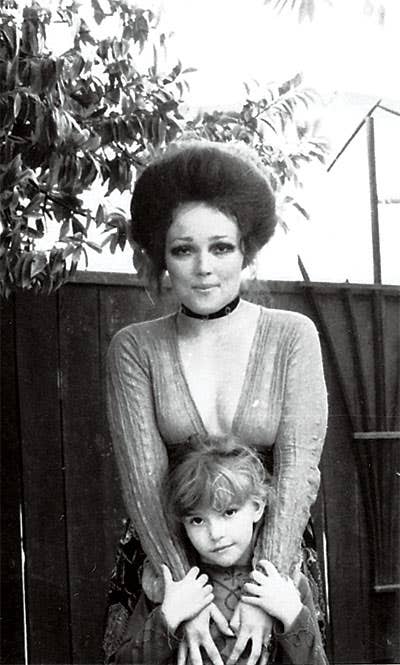
The day I left home, my mother put her copy of Frances Moore Lappe's Diet for a Small Planet in my hands. "This will guide you," she said. The laser beam of her loving attention had always been focused squarely on me, her only child — my father never was in the picture — and the most consistent expression of that love was the pointedly nutrient-rich food I ate throughout my childhood in the 1970s. Consistency, it should be noted, was sort of an issue. Mom and I moved around a lot; I was forever the new kid at school. And there were definitely times when I wondered, "Isn't it enough that I'm the one who wears the homemade clothes? Do I have to have alfalfa sprouts on my sandwich, too?"
As an adult I've made different choices from the ones my mother made. I've lived on the opposite coast for 16 years, 11 of them in the same house. I got married and stayed that way for two decades. And yet to this day my diet is defined by dishes like Mom's mjeddrah, a brown rice-lentil pilaf that is, I've heard myself telling anyone who will listen, an excellent source of complete protein, with all the essential amino acids.
To understand why, we'd better begin at the beginning. I was born in Southern California in the late 1960s, a flower child's child whose days were filled with sunshine and Beatles songs. My mother was barely an adult herself when I was born, and so we grew up together. An artist by temperament, she could never quite settle on a medium; I was, I realized early on, her proudest creation, and that realization carried with it a certain amount of stress. As we both struggled to define ourselves, our dependence on each other was intense. "I love you this much," Mom would say with arms outstretched. "I love you three times around the world and four times around God," I'd reply.
In 1971, Lappe published her seminal guide to plant-centered eating, and Mom took it very much to heart, along with the mantras of macrobiotics and complete proteins, and the nutritionist Adelle Davis's warnings regarding the evils of processed foods. She was tapping into the zeitgeist, but she was also building on a foundation provided by her own mother, a Christian Scientist and native Californian who regularly administered doses of brewer's yeast.
Mom made wonderful, earnest meals for the two of us with the foods she found at Lindberg Nutrition, a health food store tucked into a bleached-out, treeless strip mall at the corner of Crenshaw and Martin Luther King Boulevards in South Central Los Angeles. We were there most Saturday mornings, wandering the aisles together, Mom reading aloud to me from the backs of packages as our basket filled up with bags of buckwheat groats, dense loaves of whole wheat bread, nut butters, amber bottles of Chinese herbs, and unpasteurized cottage cheese. "You can have any cereal you want," she'd pronounce magnanimously in the cereal aisle, "as long as it has 100 percent of your daily vitamin and nutrient requirements."
Lindberg's was utterly unlike the supermarkets of the era. It smelled weird — a complex funk born of fermentation and herbal supplements. Looking back, it had all the visual appeal of a Soviet-era apartment block, uniformly colorless as it was. But I loved the place. I loved it for the honey-glazed sesame crackers, and for the relaxed trips there discovering new foods at my mother's side. At home in our avocado green kitchen, the results of Mom's experiments were mostly delicious. I happily devoured the oatmeal pancakes she came up with and the creamy yogurt her Salton yogurt maker produced. But I also recall a batch of popovers that were an epic fail; wheat germ, it turns out, can't be shoehorned into just anything. It was Davis who set Mom on her mission to feed us more protein. The year I was in first grade, that meant lots of shakes. She'd play with the proportions of protein powder, raw egg, fruit juice, and bananas until the mass had a pourable consistency. And of course there was that complete-protein mjeddrah, as colorless as the interior of Lindberg's, and just as comforting. Over time, the knowledge that my friends at school didn't eat this way became a point of pride. What set us apart was what made us a family.
Now a resident of New York City, I probably laugh harder than most at the scene in Annie Hall where Woody Allen abjectly orders "alfalfa sprouts and a plate of mashed yeast" at an LA restaurant. But I remain deeply grateful for those trips to Lindberg's. Health food is the food of my people. It is my red sauce, my Sunday pot roast. It's the food I seek out to feel close to California and to my mother. I miss both more than I can say.
Keep Reading
Continue to Next Story










